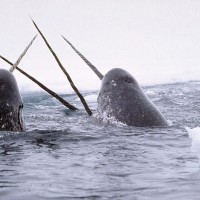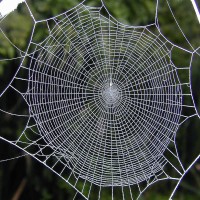The Smithsonian is…
Take a 90-second tour of what we do every day, from art to zoology and from Panama to Cambridge.
Take a 90-second tour of what we do every day, from art to zoology and from Panama to Cambridge.
S. Xavier Carnegie, Theatre Programs’ creative director at the Smithsonian’s National Museum of American History answers: How can history talk back? Questions come alive at the Smithsonian. Seriously amazing.

The narwhal tusk is the opposite of a human tooth, rigid in the center and surrounded by a flexible outer layer containing porous tubules. Scientists have long realized the signals a narwhal receives from the nerves in its spiral tusk—which is actually a wildly elongated tooth—provide critical information about its icy ocean environment. Dentist to… Continue reading How is the narwhal’s tusk like a human tooth?
Michael Collins, former director of the National Air and Space Museum. In 1969, Collins orbited the moon while Neil Armstrong and Buzz Aldrin took the first steps on its surface. He presided over the opening of the museum in 1976, as a signal from the Viking 1 spacecraft commanded a robotic arm to cut the… Continue reading Which Apollo astronaut also worked at the Smithsonian?
Michael Vecchone, curator of cephalopods at the Smithsonian’s National Museum of Natural History, answers: What animal has the largest eyes? This is awesome (and kinda gross.) Questions com alive at the Smithsonian. Seriously Amazing.
Adriel Luis, Curator of Digital & Emerging Media from Smithsonian’s Asian Pacific American Center, answers: If you could only have one pot in your kitchen, which should you choose? Questions come alive at the Smithsonian. Seriously Amazing.
Adriel Luis, Curator of Digital & Emerging Media for the Smithsonian’s Asian Pacific American Center, explains how food can be innovative. Questions come alive at the Smithsonian. Seriously Amazing.
Mary Savig, curator of manuscripts at the Smithsonian’s Archives of American Art, explains. Questions come alive at the Smithsonian. Seriously Amazing.

Chemistry! Smithsonian scientists have shown that spiders’ legs are protected by branching hairs and a non-stick chemical coating. Michael Miller, keeper at the invertebrate exhibit at the Smithsonian’s National Zoo, explains: Browsing the web › Questions come alive at the Smithsonian. Seriously Amazing.
You just ask her! Giant panda Mei Xiang has voluntarily cooperated during ultrasound procedures because of special training from animal keepers. However, she changed her mind early in August, so veterinary staff were unable to detect her fetus until she gave birth to a cub on August 23. Watch more pandamonium on the National Zoo’s… Continue reading How do you get a Giant Panda to go to the doctor?